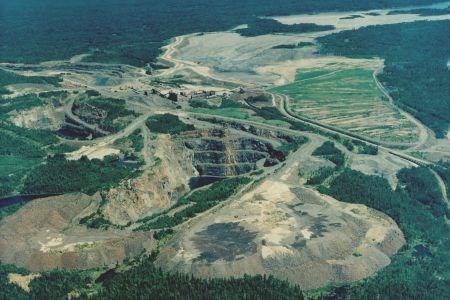Carol McBride played a leading role as the Chief of the Timiskaming First Nation in the struggle against the proposal to use the Adams Mine pit near Kirkland Lake as a dump for Toronto’s garbage. An Algonquin community, the Timiskaming First Nation is located south of the Adams Mine on the Quebec side of the border.
Chief McBride had heard about the dump proposal through the 1990s, but thought, “it was so ridiculous that it would never happen.” With the environmental assessment completed and the certificate of approval granted in 1998, a delegation from the Adams Mine Coalition asked for a meeting with the Timiskaming First Nation to enlist their support.
Fearing the impact of pollution on the local lakes and rivers, Chief McBride and her council readily agreed to work with the Coalition. As traditional caretakers of the land with claims around the Adams Mine, the Timiskaming First Nation gave the Coalition much needed support.
Chief McBride and her community members participated in marches, demonstrations and road and rail blockades with farmers, environmentalists and the general public on the other side of the border. She was part of a delegation that appeared before the International Olympic Committee in Lausanne, Switzerland, to oppose Toronto’s bid for the Summer 2008 Olympic Games and she appeared at Toronto City Hall on October 10, 2000 when City Council was preparing to vote on the dump proposal.
Surrounded by a phalanx of Timiskaming First Nation youth who prevented security from evicting her, Chief McBride addressed Toronto Mayor Mel Lastman and his Council, warning them of their resolve to never allow the Adams Mine to be used as a dump for Toronto’s garbage.
Within days, the proposal was dead.
In this video, Chief McBride points to her love of community, her responsibility as a protector of the land and her determination to “go all the way” in the struggle against a project that risked polluting the groundwater and waterways that people on both sides of the border depended on for their livelihood.
The few jobs that would have been created by the project were overshadowed by the enormity of the risk.
